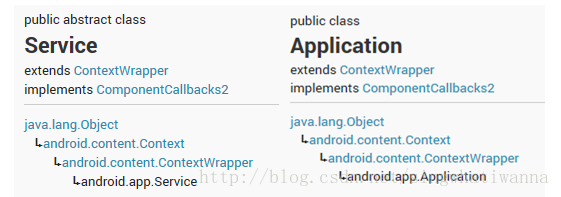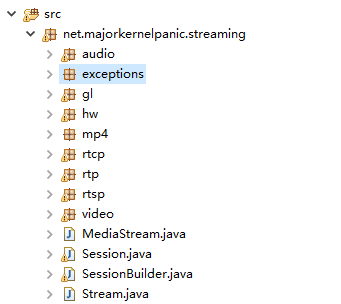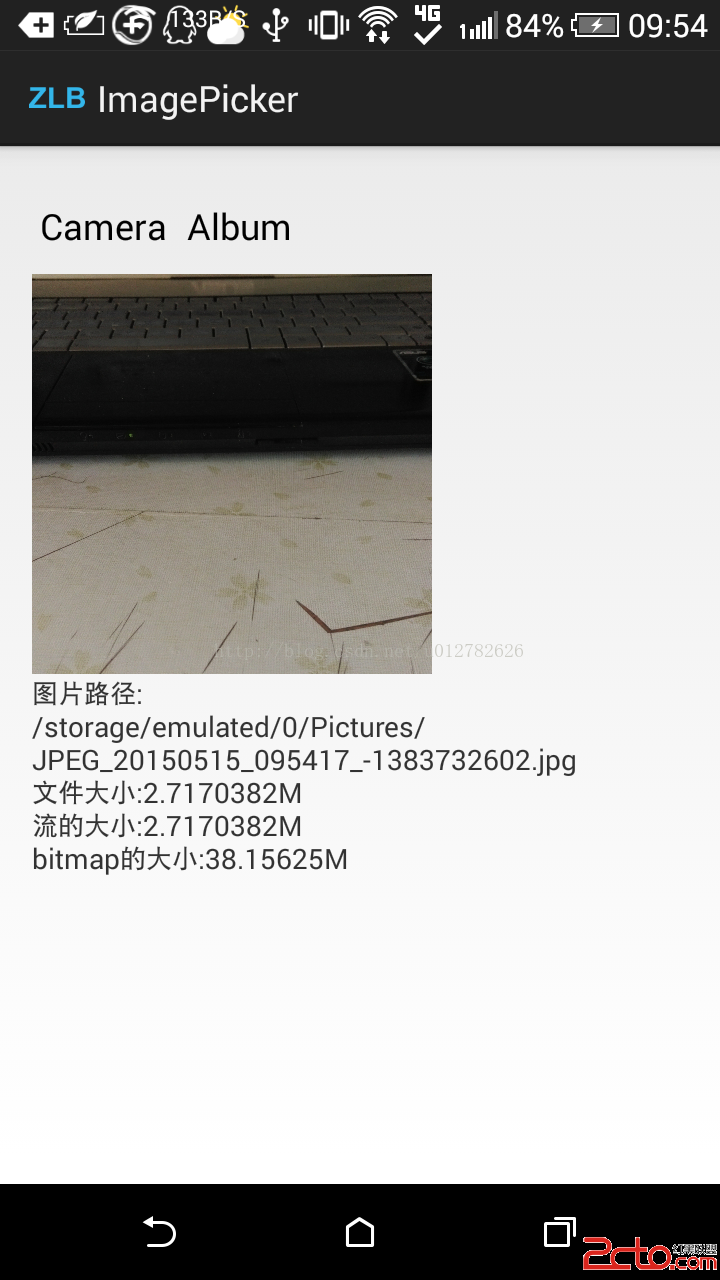編輯:關於Android編程
Android中有個我們熟悉又陌生的對象Context(上下文),當我們啟動Activity的時候需要上下文,當我們使用dialog的時候我們需要上下文,但是上下文對象到底是個什麼東西呢?
在Android api當中是這樣描述context對象的。
"Interface to global information about an application environment. This is an abstract class whose implementation is provided by the Android system. It allows access to application-specific resources and classes, as well as up-calls for application-level operations such as launching activities, broadcasting and receiving intents, etc."
“是一個用於實現關於應用環境的整體信息的一個接口。這是一個由安卓系統提供的抽象類並且系統有對他進行實現。它允許訪問到應用特殊的資源和類,同時它也可以實現到應用級別的操作,例如:Activity的啟動,廣播的實現和接受intent等。”

 可以看出我們的Context其實就是我們熟知的Activity,Service,Application。
在這3個類中,Activity的context對象和Application的context對象最容易弄混淆。
可以看出我們的Context其實就是我們熟知的Activity,Service,Application。
在這3個類中,Activity的context對象和Application的context對象最容易弄混淆。
startActivity(Intent, Bundle)with no options specified.
Formatterandformat(String, Object...).
可以看到makeText方法接受的context被用於 context.getSystemService(Context.LAYOUT_INFLATER_SERVICE); View v = inflate.inflate(com.android.internal.R.layout.transient_notification, null); 這是用於獲取XML中定義的View的方法,可以看到通過外部傳入的Context,在這裡獲得了一個View布局用於顯示Toast。 這一行中可以看出在context又被用來獲取資源文件,可以看出Toast的顯示和布局都是通過context去調用系統寫好的資源文件來進行實現的。
 Android直播推流學習
Android直播推流學習
第一部本文也主要是一步步分析spydroid源碼。 首先spydroid的采用的協議是RTSP,目前我知道支持RTSP協議的服務器是Darwin,但是Darwin比較復雜
 Android圖像常用壓縮技術
Android圖像常用壓縮技術
近期在做圖片上傳的功能,從相機拍攝或從相冊選區。就研究了這方面的東西一.圖片的基本知識1.文件形式(即以二進制形式存在於硬盤上)獲取大小(Byte):File.lengt
 Android:長按連續響應的Button
Android:長按連續響應的Button
在電商類app的購物車頁面,經常會有這樣的需求:長按“+”按鈕或者“-”按鈕時,購物車中的商品數量連續的增加或減少。本例的
 Android自定義控件系列五:自定義絢麗水波紋效果
Android自定義控件系列五:自定義絢麗水波紋效果
今天我們來利用Android自定義控件實現一個比較有趣的效果:滑動水波紋。先來看看最終效果圖: 圖一 效果還是很